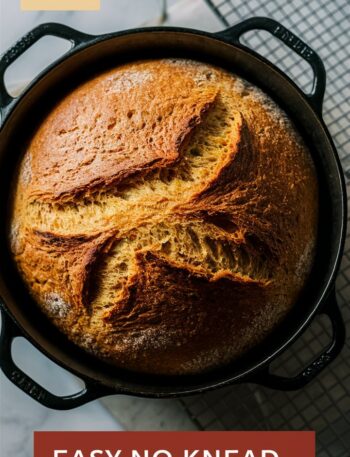There’s something irresistibly comforting about the scent of freshly baked bread—especially soft, buttery crescent rolls. Whether it’s the golden hue of their flaky crust or the pillowy texture inside, these rolls evoke nostalgia, warmth, and the magic of home baking.
Unlike store-bought alternatives that come from a can, homemade crescent rolls offer depth of flavor and texture you can’t replicate. They’re ideal for beginner bakers who want to try something impressive yet manageable, and perfect for seasoned home cooks looking for a reliable go-to recipe.
In this ultimate guide, we’re going beyond the basics. You’ll learn the step-by-step method, baking science, expert tips, variations, make-ahead strategies, and storage secrets—everything you need to become a crescent roll pro.
Why Make Homemade Crescent Rolls?
You might be wondering: “Why not just pop open a can of crescent rolls and be done with it?”
Here’s why making them from scratch is a game-changer:
- Flavor Depth: Homemade rolls have layers of taste—real butter, active yeast, and fresh eggs.
- Texture Control: Soft inside, lightly crisp outside—exactly how you like it.
- Ingredient Purity: No preservatives, artificial flavors, or additives.
- Versatility: You can fill, top, or flavor them a dozen different ways.
Most importantly, homemade bread is soulful. Every bite carries the effort, patience, and care you poured into the dough.
Tools You’ll Need
Before diving into the dough, gather your tools. Having the right equipment can make baking smoother and more enjoyable:
| Tool | Purpose |
|---|---|
| Large mixing bowl | For combining ingredients |
| Measuring cups & spoons | Accurate ingredient portions |
| Dough scraper or rubber spatula | To manage sticky dough |
| Rolling pin | For shaping the dough circle |
| Sharp knife or pizza cutter | To slice dough into triangles |
| Baking sheet & parchment paper | For even baking and no sticking |
| Clean kitchen towel | To cover dough while rising |
| Pastry brush | To apply melted butter |
Optional but helpful:
- Stand mixer with dough hook
- Food thermometer (for milk temperature)
Ingredients Breakdown
Each ingredient plays a specific role in creating the ideal texture and flavor:
| Ingredient | Function |
|---|---|
| Warm Milk (1 cup) | Activates yeast; adds richness |
| Granulated Sugar (1/3 cup) | Feeds the yeast and adds mild sweetness |
| Instant Yeast (2 ¼ tsp) | Helps the dough rise |
| Unsalted Butter (½ cup, softened) | Adds flavor and tenderizes |
| Eggs (2 large) | Provide structure and richness |
| All-Purpose Flour (4 cups) | Forms the dough structure |
| Salt (1 tsp) | Balances flavor |
| Melted Butter (2 tbsp) | Brushed on top for golden crust |
Step-by-Step Instructions
Step 1: Activate the Yeast
Warm the milk to about 105–110°F (not hot). Add sugar and yeast, stir, and let sit for 5–10 minutes. It should foam and bubble. If not, your yeast may be inactive.
Step 2: Mix Wet Ingredients
Add softened butter, eggs, and salt to the frothy yeast mixture. Stir until combined—it should resemble a thick batter.
Step 3: Add the Flour Gradually
Mix in the flour one cup at a time until a soft, sticky dough forms. You may not need all 4 cups, or you might need a bit more depending on humidity.
Step 4: Knead the Dough
Turn the dough onto a lightly floured surface. Knead for 8–10 minutes until smooth and elastic. Alternatively, use a stand mixer for 5 minutes with the dough hook.
Step 5: First Rise
Place dough in a greased bowl, cover with a kitchen towel, and let rise in a warm area for 1 hour, or until doubled in size.
Step 6: Shape the Rolls
Punch down the dough and divide it into two equal parts. Roll each into a 12-inch circle. Slice each into 8 wedges (like a pizza). Roll each wedge from the wide end toward the point.
Step 7: Second Rise
Place rolls on a parchment-lined baking sheet. Cover and let rise for 30 minutes.
Step 8: Bake
Preheat oven to 375°F (190°C). Brush the tops with melted butter. Bake for 12–15 minutes until golden brown.
Step 9: Cool and Serve
Let cool slightly before serving. Enjoy plain or with jam, honey, or garlic butter.
Pro Baking Tips for Perfect Crescent Rolls
- Don’t overheat the milk — Hot liquid kills yeast.
- Measure flour carefully — Too much makes dense rolls.
- Don’t skip the second rise — It ensures airiness.
- Brush twice — Before baking for shine, after baking for flavor.
- Shape gently — Don’t compress or stretch too hard while rolling.
Crescent Roll Variations and Fillings
Your crescent rolls don’t have to be plain! Try these creative twists:
🍯 Sweet Versions:
- Cinnamon sugar swirl
- Cream cheese & jam
- Mini apple pie filling
🧄 Savory Versions:
- Garlic butter with herbs
- Cheddar & jalapeño
- Ham & cheese
🥐 Topping Ideas:
- Everything bagel seasoning
- Sesame seeds
- Parmesan & cracked pepper
These variations turn your simple roll into an appetizer, snack, or even a meal.
Make-Ahead and Freezing Guide
Overnight Method:
- Prepare rolls up to shaping.
- Place on a tray, cover tightly, refrigerate overnight.
- Bring to room temp and let rise before baking.
Freezing Method:
- Freeze shaped (unbaked) rolls on a tray.
- Once frozen, transfer to a freezer bag.
- To bake: thaw in fridge overnight, rise, then bake as usual.
Storing and Reheating
- Store rolls in an airtight container at room temperature for 3 days.
- To reheat: wrap in foil, warm in oven at 300°F for 5–10 minutes.
- You can also microwave for 10–15 seconds for quick softening (though oven is better for texture).
Serving Ideas
Crescent rolls pair beautifully with almost anything:
- Breakfast: With eggs, bacon, or as a breakfast sandwich
- Lunch: With soup, salad, or deli meats
- Dinner: Alongside pasta, stews, or roast chicken
- Snacks: With nut butter, honey, or melted chocolate
- Entertaining: Stuffed or topped as party rolls
Troubleshooting: Common Crescent Roll Issues
| Problem | Likely Cause | Fix |
|---|---|---|
| Dough didn’t rise | Inactive yeast | Check water temp and expiration |
| Rolls are dry | Too much flour | Use less, add gradually |
| Dense texture | Skipped 2nd rise | Let dough fully rise both times |
| Burned bottoms | Thin tray or too long in oven | Use parchment + check early |
| Pale rolls | Oven too cool or underbaked | Use an oven thermometer |
FAQs
Can I use active dry yeast instead of instant yeast?
Yes, just proof it in warm milk with sugar for 10 minutes before mixing.
Can I make these vegan?
Yes, use plant milk, vegan butter, and egg replacer like flax eggs.
Can I double the recipe?
Absolutely! Just divide the dough into 4 rounds instead of 2 for shaping.
What if I don’t have a rolling pin?
Use a wine bottle or press with your hands—it works just fine.
How do I know the dough is kneaded enough?
It should be smooth and spring back slightly when pressed.
Nutritional Information (Per Roll)
| Nutrient | Amount |
|---|---|
| Calories | 145 |
| Fat | 5.5 g |
| Saturated Fat | 3.2 g |
| Carbs | 21 g |
| Sugar | 3 g |
| Protein | 3 g |
| Fiber | 1 g |
| Sodium | 95 mg |
| Cholesterol | 28 mg |
Note: Nutritional values may vary based on fillings or toppings.
Final Thoughts
Homemade crescent rolls might seem intimidating at first—but once you try them, you’ll never look at a tube of dough the same way again. They’re soft, buttery, endlessly customizable, and deeply rewarding to make.
Whether you bake them for a holiday meal, a cozy Sunday dinner, or just to treat yourself midweek, these rolls deliver comfort and joy every single time. And best of all, you now have all the knowledge to make them from scratch like a pro.




